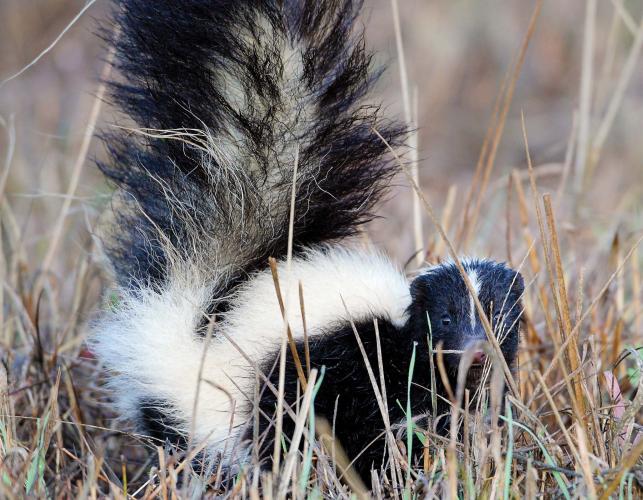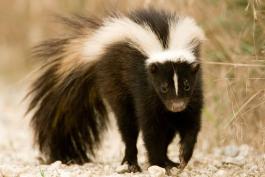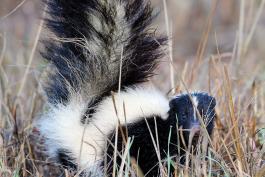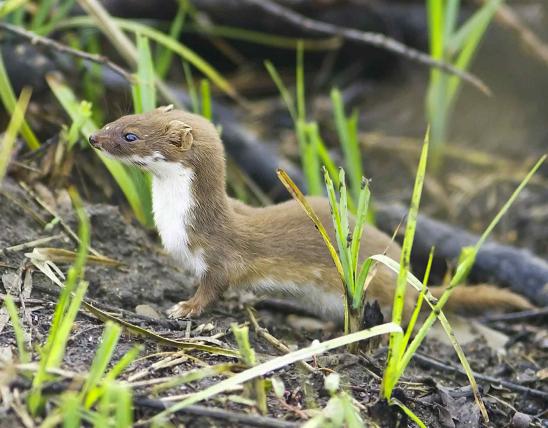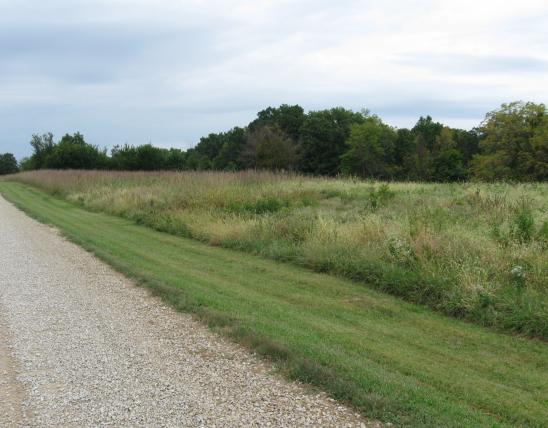Highway 61 divides this area's 148 acres (58 acres to the east and 90 acres to the west). The area consists of approximately 80 percent timbered land and 20 percent open land.

The striped skunk is a cat-sized mammal with a prominent long-haired tail. The fur is black, usually with a white stripe running down the head and dividing to become two stripes on each side of the body.
Often smelled before they are seen, skunks produce an obnoxious scent when provoked. This disagreeable musk is secreted by glands at the base of the tail and can be aimed and sprayed at will. Prior to spraying, skunks usually warn intruders by stamping their feet and holding the tail high in the air.
Similar species: The plains spotted skunk also occurs in Missouri, but it is rarer. It is smaller, only reaching ¾–2¾ pounds. It is black with conspicuous white stripes and spots. There is a white spot on the forehead and in front of each ear. Four white stripes along the neck, back, and sides extend from the head to about the middle of the body. Behind these, more white stripes and spots occur. The tail is usually all black, sometimes with a white tip.
Total length: 20–30 inches; tail length: 7–15 inches; weight: 2½–11½ pounds.
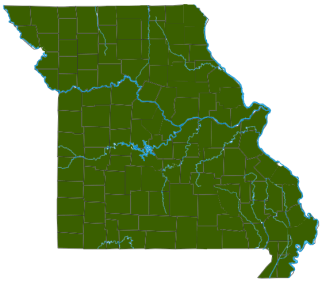
Statewide, but least numerous in the Mississippi Lowlands of the Bootheel, where there is little high land for den sites.
Habitat and Conservation
Striped skunks use a variety of habitats but prefer forest borders, brushy field corners, fencerows, and open grassy fields broken by wooded ravines and rocky outcrops, where permanent water is nearby. The den of a skunk is usually in the ground but occasionally is located in a stump, refuse dump, cave, rock pile, crevice in a cliff, farm building, wood pile, or haystack.
Food
Striped skunks forage most of the night and are omnivorous, eating both plants and animals. In spring and summer, insects are their preferred food, including bees, wasps, hives, larvae, and honey. Skunks also consume many mice and rats, plus moles, shrews, ground squirrels, young rabbits, and chipmunks. Larger mammals are usually eaten as carrion; smaller ones are caught by the skunk. Birds and their eggs are rarely eaten.
Status
Common, despite a long-term overall decline.
Life Cycle
Breeding starts in February. Females more than 1 year old mate at this time, and younger females mate about a month later. The single litter of 4–6 young is born from early May to early June. At birth, young skunks are almost naked, but they possess the beginning of the adult's characteristic black and white markings. As it gets colder in late autumn, more time is spent in dens. When it’s near freezing, skunks become drowsy and sleep intermittently, but they do not truly hibernate.
Control
Human Connections
The fur is thick and glossy, and to trappers and furriers, the blackest pelts are the most valuable.
Skunk meat untainted with musk is good eating.
Skunks are good mousers and help control insects; thus they are an asset around farms. Skunks are interesting and valuable members of a farm wildlife community.
To deter unwanted skunks, begin by making yards and outbuildings less accessible and attractive to them.
With their exterior beauty but repulsive odor, skunks have played numerous roles in human culture and story-telling, including Native American lore and popular television cartoons and children's tales.
Ecosystem Connections
Skunks consume smaller animals and insects, helping to control their populations.
As scavengers, skunks help clean up the woods.
Despite the foul-smelling spray, some animals, such as great horned owls, prey on skunks.
Signs and Tracks

Front track:
- 1¾ inches long
- 5 toes
- claws often show.
Hind track:
- 2¾ inches long
- 5 toes
- claw imprints rarely show.
- heel seldom shows.
Other notes:
- Unless running, front tracks appear in front of hind tracks.
- Skunks shuffle and waddle as they walk, with an undulating, 5–6 inch stride.
- Skunks dig up soil in small pits as they hunt for grubs and other invertebrates.
- The tracks look something like miniature bear tracks.

